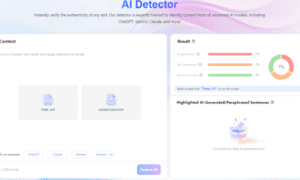Imagine waking up to a business crippled by a ransomware attack: no data, no communication, and no operations. This scenario might seem like a scene from some dystopian future, but it’s the hard reality thousands of businesses face yearly because of malicious ransomware attacks.
What might begin as a seemingly harmless click on an email—a phishing email—can quickly escalate into an operational nightmare for you and your business. What’s more, this is not a mere tech complication; it’s a business continuity problem with the potential to devastate every corner of your business.
Cybercriminals have made ransomware a weapon of choice in today’s fast-evolving and unpredictable threat landscape. These attackers target businesses regardless of size. As companies’ reliance on digital tools and infrastructure increases more and more, the potential fallout from an attack has become greater than ever before. Beyond the immediate threat to your sensitive and important data, ransomware can potentially end your business, hinder operations, damage reputations, and heavily bleed out your business through financial losses.
Understanding The Different Types of Ransomware
Ransomware comes in different shades, but the common thread is that all ransomware serves the same destructive purpose: blocking your access to critical data or systems until you pay a ransom to the perpetrating criminals behind an attack. Let’s begin with the most common ransomware types: encrypting and locker.
Encrypting ransomware operates by encrypting files on a company’s systems. By scrambling a victim’s files or data and rendering them inaccessible without a decryption key, cybercriminals gain the leverage to present victims with a message demanding ransom for the decryption key. As its name suggests, Locker ransomware will lock users out, rendering systems inaccessible to their owners. Data remains unencrypted, but the attacker will effectively paralyze a victim’s business operations by ‘holding the system hostage’ until his demands for a ransom payment have been met.
Cybercriminals perpetrate these ruthless attacks using various methods, but phishing—e.g., an employee innocently clicking a malicious link—remains one of the most common vectors for ransomware attacks. After one unsuspecting click on a poisoned hyperlink, the next thing you know, malware is spreading rapidly through networks, exploiting vulnerabilities and ravaging your system.
Ransomware’s Impact on Business
You might think the operational disruption caused by ransomware is all the damage a victim will incur, but it is only the beginning. The ripple effect of a terrible ransomware attack will devastate a company’s finances, reputation, and long-term viability. Let’s reckon with these losses:
Financial Losses: Any downtime on your business is costly; even a brief period offline results in lost revenue and missed opportunities. Often, recovery efforts are also costly, hurting your business’ finances. A report by IBM established that the average cost of a ransomware breach rose to $4.88 million in 2024, a mind-bogglingly large sum that includes the ransom amount and the cost of recovery, legal, and fines for failures to meet regulatory compliance.
Consider JBS Foods, the largest meat processing company in the world. In 2021, JBS suffered a debilitating ransomware attack that caused the shutdown of its processing plants worldwide. JBS forked an $11 million ransom to the attackers to regain control of its systems, but the shutdown’s estimated total financial impact was much higher.
Reputational Damage: Beyond the immediate financial loss it suffers, a company hit by a ransomware attack suffers longer-term damage to its good name. The business world operates on trust, a valuable commodity that, if lost, will result in clients and customers departing from the affected brand. The negative press arising from a heavy attack dissolves the market’s trust in your brand and makes it much harder to attract new business.
Operational disruption: A ransomware attack’s most obvious and immediate impact is the disruption of core business operations. With key systems offline, employees need help to do their jobs, and business stops. Depending on an attack’s severity, this downtime can last for days or weeks; hence, a company without robust backup strategies for agile recovery will potentially miss essential deadlines, lose valuable contracts, and suffer productivity losses.
Preventing Phishing Attacks
Imagine waking up to a business crippled by a ransomware attack: no data, no communication, and no operations. This might begin as a seemingly harmless click on a phishing email, quickly escalating into an operational nightmare. Utilizing cloud email security services and Microsoft 365 email security can help identify and block these phishing attempts before they reach employees’ inboxes, significantly reducing the risk of a ransomware incident originating from a deceptive email.
Combating Ransomware Attacks
Combating ransomware entails adopting a multi-layered security approach. Regular, encrypted backups are vital, but it’s also crucial to prevent ransomware from infiltrating systems in the first place. Employing cloud email security services offers additional protection by filtering out malicious emails before they can be opened. Moreover, leveraging Microsoft 365 email security features can enhance your defenses by providing advanced threat protection against sophisticated email-based attacks.
Mitigating ransomware is non-negotiable and entails three crucial best practices:
Regular, encrypted backups are the main lifeline. Back up your data regularly and store it securely in an encryption-secured cloud-based service.
Multi-factor authentication (MFA): the additional layers of security afforded by MFA make it more difficult for attackers to access your critical systems and data, as multiple walls of protection must be breached.
An Incident Response Plan: A well-rehearsed Incident Response Plan belongs in your business’ security toolbox because, ultimately, no matter how strong your cyber defenses are, no system is entirely impervious to malicious ransomware attacks.
Incident Response and Recovery
A well-rehearsed Incident Response Plan is essential because no system is impervious to ransomware attacks. However, using cloud email security services and Microsoft 365 email security can reduce the likelihood and impact of an attack by reducing successful phishing attempts. These services can provide vital logs and data that help understand the origin and method of attack, aiding faster recovery and improving future defenses against similar threats.



































